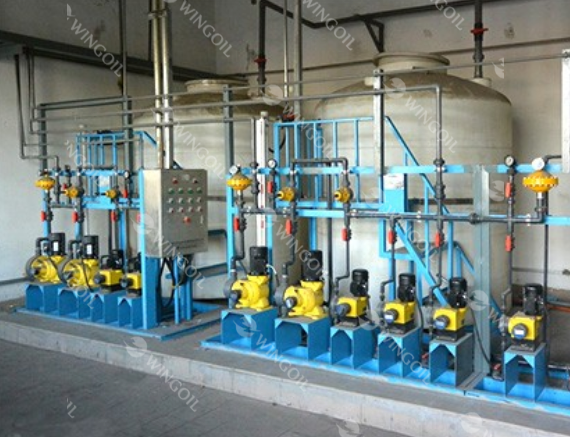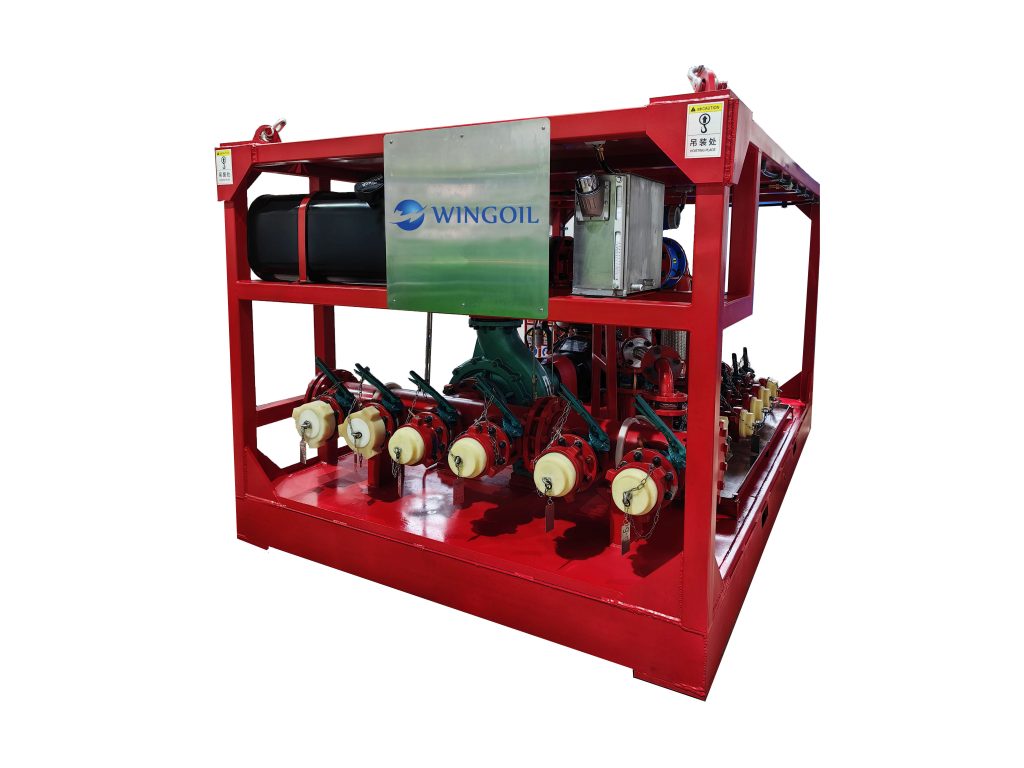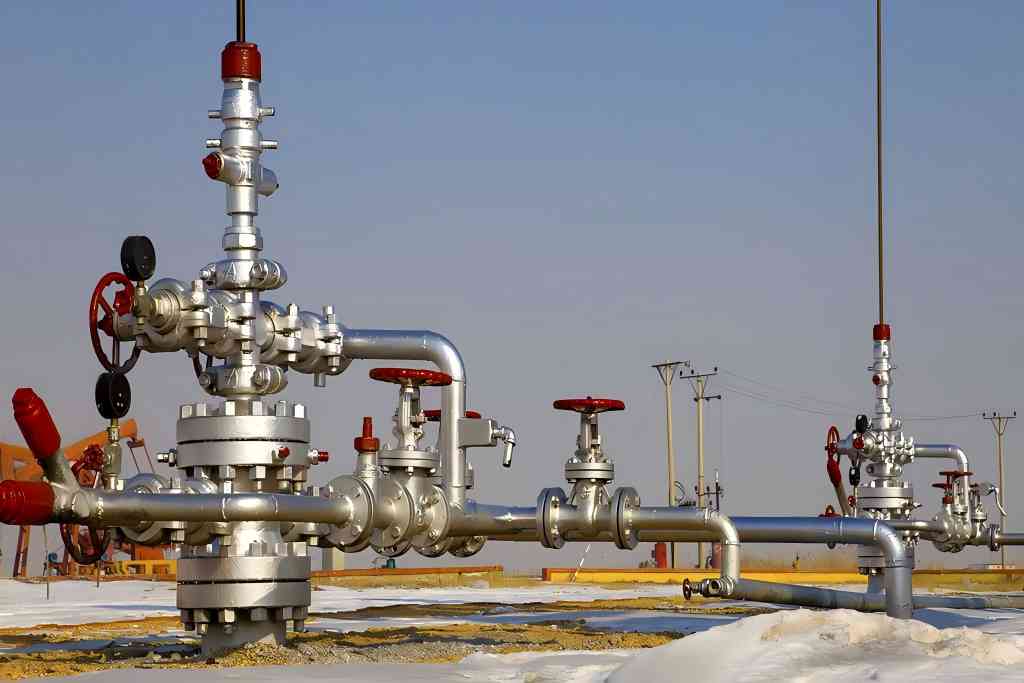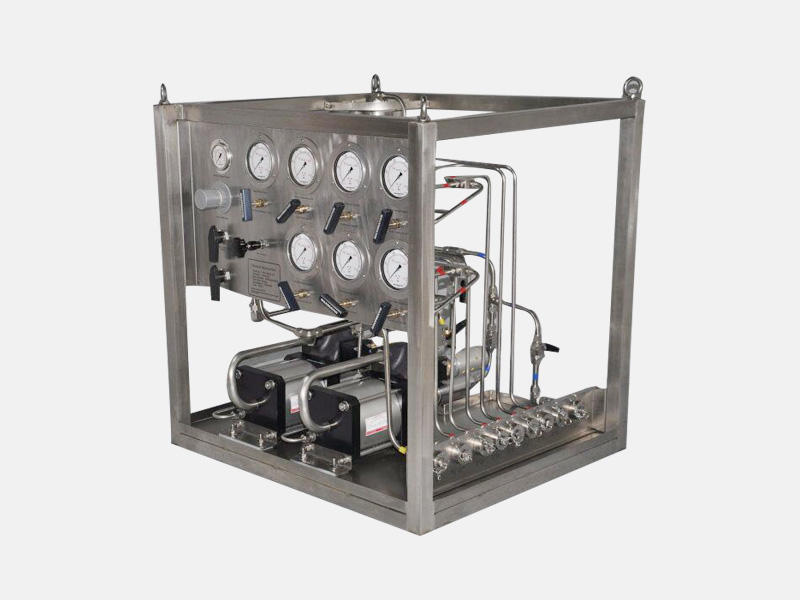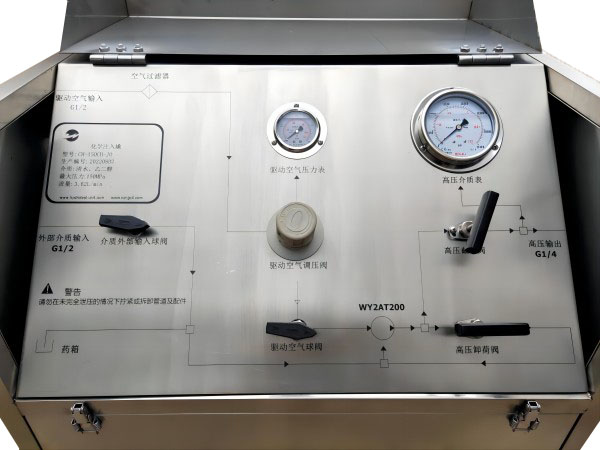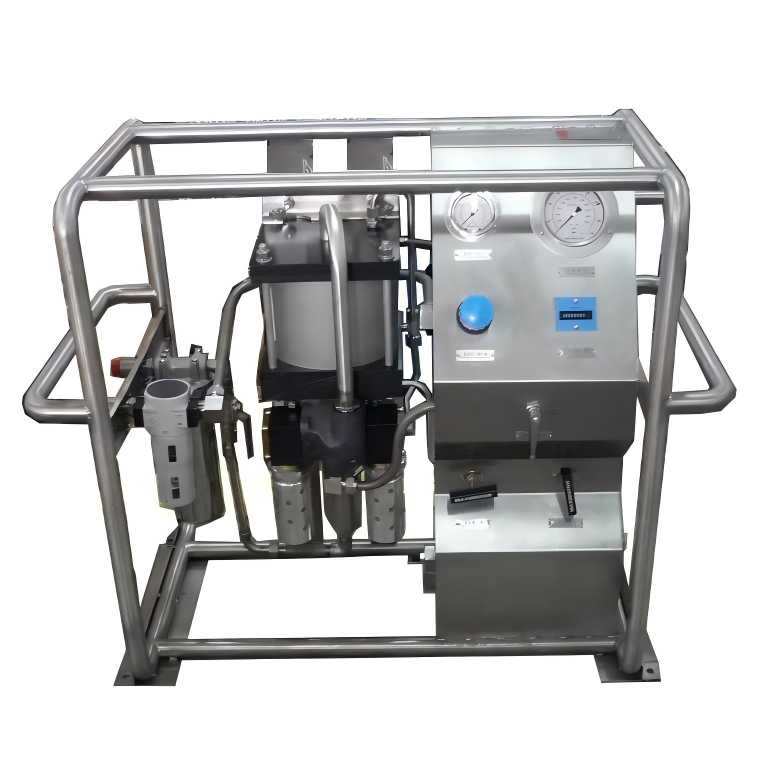Chemical Injection Pump for Oil and Gas: Common Faults and Solutions
Chemical injection pumps play a critical role in the oil and gas industry. These pumps precisely inject specific chemicals at designated wellhead locations to prevent problems that could hinder the extraction and processing of oil and gas. This article delves into the essential functions of chemical injection pumps, explores common faults these pumps encounter, and outlines preventative measures to ensure their optimal performance.
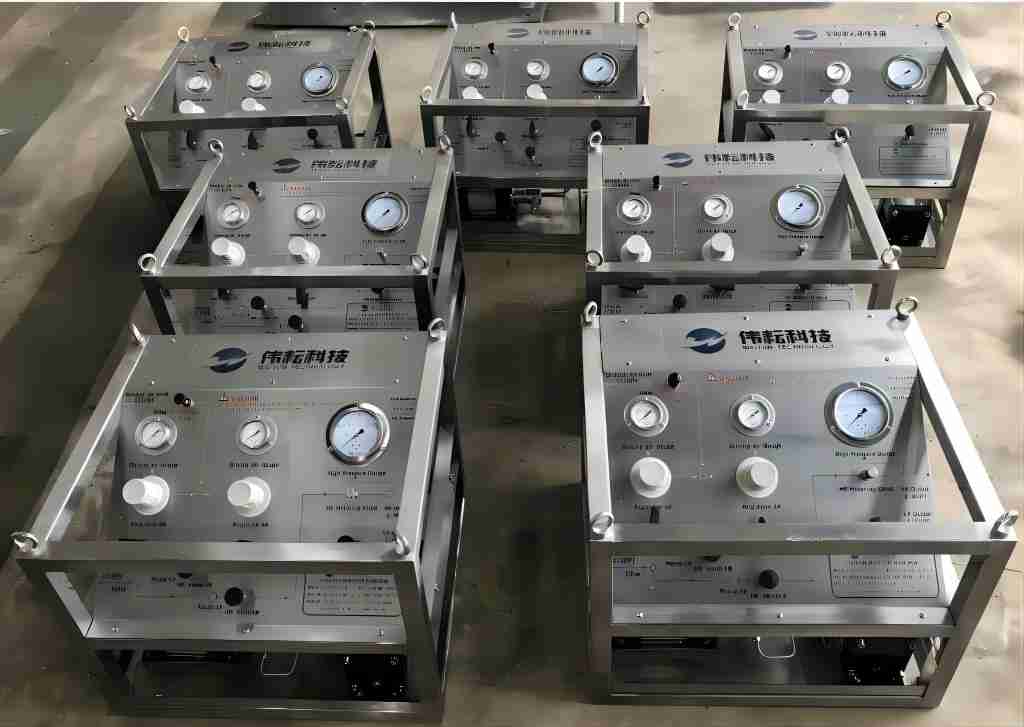
Understanding Chemical Injection Pumps
Chemical injection pumps are essentially precision machines with three main components:
- High-Pressure Hydraulic Section: This section generates the force required to push the chemicals into the well. It typically utilizes a hydraulic fluid that is pressurized within a closed system.
- Mechanical Section: This section controls the flow rate and direction of the injected chemicals. It consists of valves, pistons, or diaphragms depending on the pump design.
- Drive Air Section: This section provides the power source for the pump’s operation. It often uses compressed air to drive the pistons or diaphragms in the mechanical section.
By precisely controlling the flow rate and pressure of the injected chemicals, these pumps ensure critical functions like:
- Preventing Hydrate Formation: During extraction, natural gas can combine with water vapor to form ice-like crystals called hydrates. These hydrates can clog pipelines and disrupt production. Chemical injection pumps introduce methanol or other inhibiting chemicals to prevent hydrate formation and maintain gas flow.
- Corrosion Control: The presence of corrosive elements like hydrogen sulfide and carbon dioxide in oil and gas can damage pipelines and equipment. Chemical injection pumps introduce corrosion inhibitors that form a protective film on the internal surfaces, mitigating corrosion and extending equipment life.
- Scale Inhibition: Certain minerals dissolved in water produced alongside oil and gas can precipitate and form scale deposits within pipelines. Chemical injection pumps introduce scale inhibitors that prevent these mineral deposits from forming, ensuring uninterrupted flow.
- Separation and Treatment: During processing, oil, gas, and water need to be separated. Chemical injection pumps introduce demulsifiers that break down emulsions, allowing for efficient separation of these components. Additionally, biocides may be injected to control bacterial growth which can hinder processing efficiency.
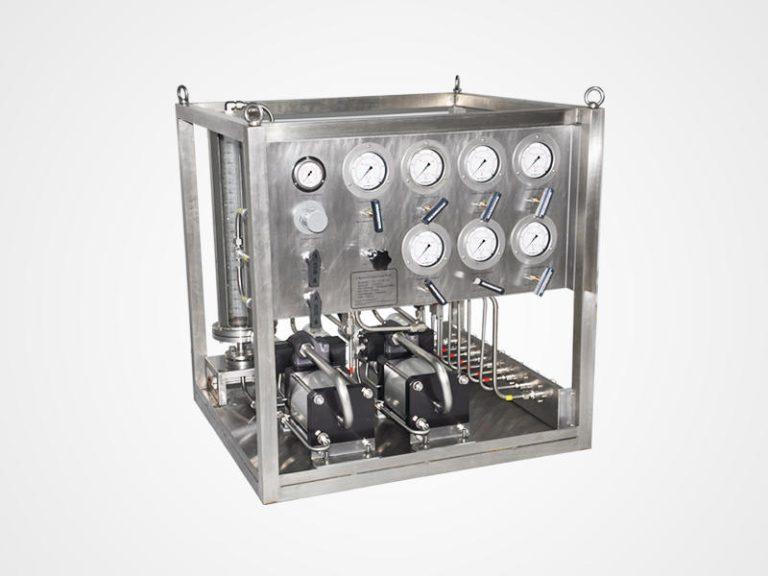
Common Faults and Solutions
Chemical injection pumps, despite their durability, can encounter various issues during operation. Prompt detection and rectification are essential to minimize downtime and ensure optimal performance. Here’s a breakdown of common problems and solutions:
1. Hydraulic Part Faults
1) Damaged Seals: Over time, seals within the hydraulic section can deteriorate due to wear and tear, exposure to harsh chemicals, or extreme temperatures. This can lead to internal leaks and a decline in pump efficiency.
Solution: Regularly inspect seals for signs of damage and replace them promptly to prevent leaks and maintain optimal pressure. Utilize high-quality seals designed to withstand specific operating conditions, including chemical compatibility and temperature range.
2) Hydraulic Oil Leakage: Leaks within the hydraulic system can occur due to loose connections, worn-out pipelines, or faulty components. Leaks not only result in a loss of hydraulic fluid but also compromise the pump’s ability to generate sufficient pressure.
Solution: Conduct thorough inspections to identify and tighten loose connections. Replace defective pipelines or components with compatible, high-quality materials. Ensure the hydraulic oil is free from contaminants and meets the pump’s specifications. Regularly change the hydraulic oil according to the manufacturer’s recommendations to maintain optimal lubrication and prevent component wear.
3) Wear of Internal Components: Continuous operation can cause internal components like pistons, diaphragms, and valves to wear down, leading to decreased pump performance and potential malfunction.
Solution: Implement a scheduled maintenance program that includes inspection and replacement of worn-out internal components before they cause significant issues. Utilize spare parts kits recommended by the manufacturer to ensure compatibility and efficient maintenance.
2. Drive Air Part Faults
1) Poor Air Source Quality: The quality of compressed air used to power the pump can significantly impact its performance. Contaminants like moisture or oil in the air stream can damage internal components and hinder pump operation.
Solution: Implement air filtration systems with appropriate micron ratings to remove contaminants like dust, moisture, and oil from the compressed air supply. Regularly drain condensation from the airlines using automatic or manual traps to prevent moisture buildup.
2) Insufficient Air Pressure: The pump requires a specific level of air pressure to operate effectively. If the air pressure is too low, the pump won’t generate sufficient force to inject the chemicals properly.
Solution: Ensure the air compressor supplying the pump maintains the recommended air pressure by monitoring pressure gauges and adjusting the compressor settings as needed. Check for leaks or pressure drops within the airlines and address them promptly using appropriate sealing methods.
3) Problems with the Pneumatic Pump Itself: Internal issues within the pneumatic pump itself, such as malfunctioning valves or damaged pistons, can hinder its ability to convert air pressure into the necessary force for driving the hydraulic system.
Solution: Conduct a thorough inspection of the pneumatic pump to identify malfunctioning components. Depending on the severity of the issue, consider repair or replacement of the affected parts using manufacturer-approved components. In some cases, the entire pneumatic pump might require replacement.
3. Insufficient Chemical Injection
1) Insufficient Pump Flow Rate: If the pump’s flow rate is inadequate, it may not inject the required amount of chemicals into the well. This could be due to internal wear and tear, malfunctioning valves, or incorrect pump settings.
Solution: Inspect the pump for internal wear and replace worn-out components like pistons or diaphragms if necessary. Verify that valves are functioning properly by cleaning or replacing them as needed. Ensure pump settings are adjusted to deliver the desired flow rate according to the specific chemical injection requirements.
2) Clogged Piping: Blockages within the pipelines leading from the pump to the injection point can prevent the chemicals from reaching the well. This can occur due to a buildup of debris, scale formation, or even solidification of the injected chemicals themselves if they encounter unfavorable temperature or pressure conditions.
Solution: Regularly clean the pipelines to remove any accumulated debris or scale. Depending on the severity of the blockage, this might involve flushing the lines with solvents or utilizing mechanical cleaning tools. Consider modifying the injection process, such as adjusting temperature or pressure settings, to prevent future blockages if the solidification of chemicals is a concern. Utilize compatible piping materials that resist corrosion and scaling buildup.
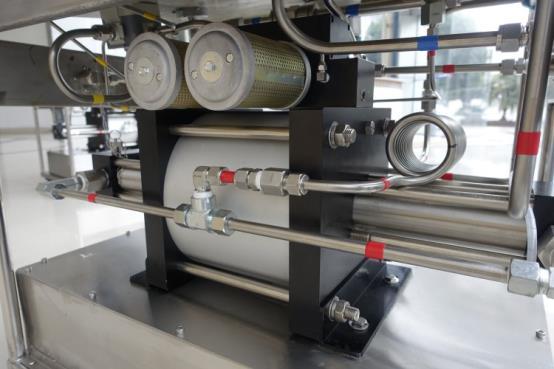
Preventive Measures
By implementing a proactive maintenance strategy, you can significantly reduce the likelihood of encountering these common faults and ensure the long-term, reliable operation of your chemical injection pumps. Here are some key preventative measures:
- Regular Inspections: Schedule routine inspections of the entire chemical injection pump system, including the hydraulic section, drive air section, pump body, and pipelines. These inspections should involve visual checks for leaks, signs of wear, and damage, as well as performance checks to verify proper flow rate and pressure.
- Cleaning and Maintenance: Regularly clean the pump and its surrounding environment to prevent dust, dirt, and other contaminants from accumulating and potentially causing internal component wear or malfunction. Implement a scheduled maintenance program to replace worn-out components like seals, filters, and valves before they lead to significant issues.
- Proper Operation: Ensure personnel are adequately trained on the proper operation and maintenance procedures for chemical injection pumps. This includes following the manufacturer‘s recommendations for handling chemicals, maintaining correct pressure settings, and adhering to safe work practices.
- Timely Repair: Address any detected faults promptly to prevent them from escalating into more serious problems. A minor leak or a worn-out seal, if left unattended, can lead to costly equipment failures and production downtime.
Conclusion
Chemical injection pumps are crucial components in the smooth and efficient operation of oil and gas production facilities. By understanding their functions, potential faults, and preventative measures, operators can ensure these pumps function optimally and contribute to maximizing production output. Regular inspections, proper maintenance, and adherence to operational guidelines are essential for maintaining the reliability and longevity of chemical injection pumps, ultimately contributing to a successful and cost-effective oil and gas production process.

